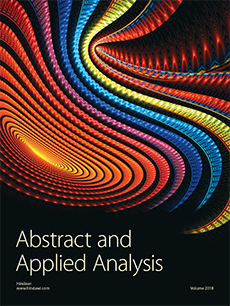Abstract
The generalized coupled Sylvester systems play a fundamental role in wide applications in several areas, such as stability theory, control theory, perturbation analysis, and some other fields of pure and applied mathematics. The iterative method is an important way to solve the generalized coupled Sylvester systems. In this paper, an iterative algorithm is constructed to solve the minimum Frobenius norm residual problem: $‖(\begin{smallmatrix}AXB\\[5pt] CXD\end{smallmatrix})-(\begin{smallmatrix}E\\[5pt] F\end{smallmatrix})‖=$ min over generalized reflexive matrix $X$. For any initial generalized reflexive matrix ${X}_{1}$, by the iterative algorithm, the generalized reflexive solution ${X}^{\ast}$ can be obtained within finite iterative steps in the absence of round-off errors, and the unique least-norm generalized reflexive solution ${X}^{\ast}$ can also be derived when an appropriate initial iterative matrix is chosen. Furthermore, the unique optimal approximate solution $\widehat{X}$ to a given matrix ${X}_{0}$ in Frobenius norm can be derived by finding the least-norm generalized reflexive solution ${\stackrel{~}{X}}^{\ast}$ of a new corresponding minimum Frobenius norm residual problem: $\text{min}‖(\begin{smallmatrix}A\stackrel{~}{X}B\\[5pt] C\stackrel{~}{X}D\end{smallmatrix})-(\begin{smallmatrix}\stackrel{~}{E}\\[5pt] \stackrel{~}{F}\end{smallmatrix})‖$ with $\stackrel{~}{E}=E-A{X}_{0}B$, $\stackrel{~}{F}=F-C{X}_{0}D$. Finally, several numerical examples are given to illustrate that our iterative algorithm is effective.
Citation
Feng Yin. Guang-Xin Huang. "An Iterative Algorithm for the Least Squares Generalized Reflexive Solutions of the Matrix Equations ." Abstr. Appl. Anal. 2012 1 - 18, 2012. https://doi.org/10.1155/2012/857284
Information





